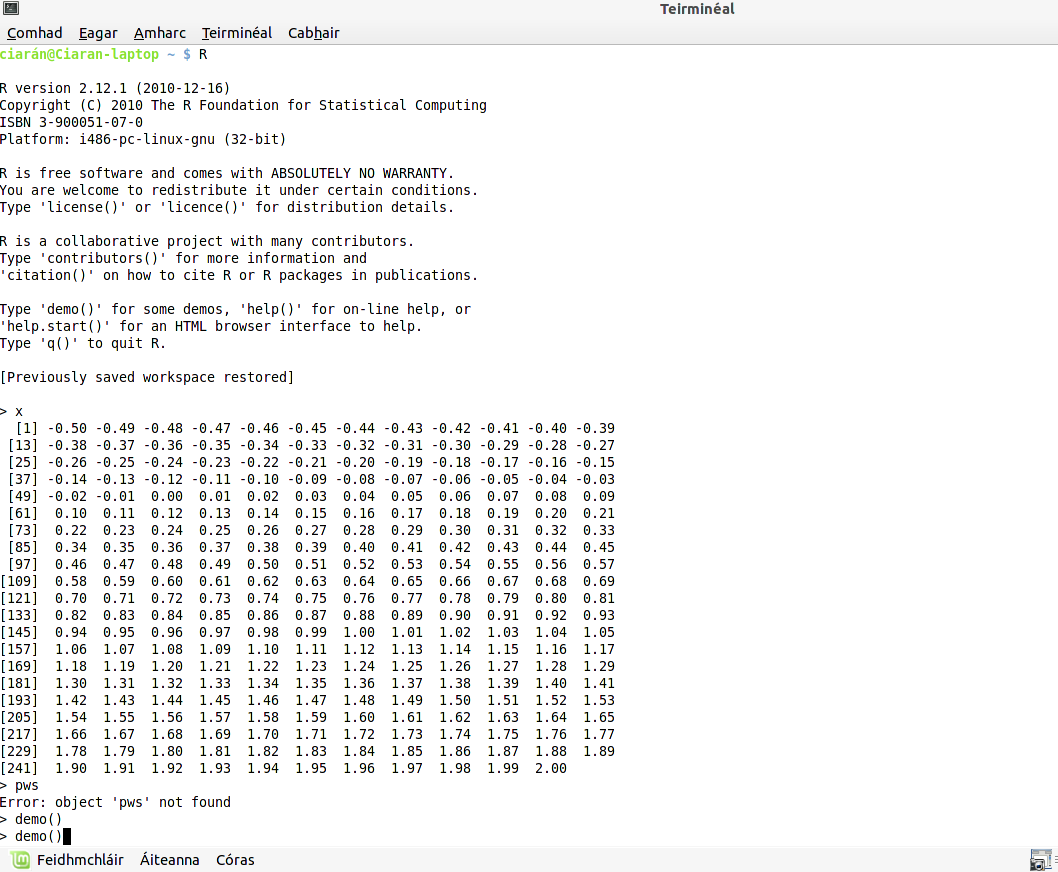r-base-core

The design of R has been heavily influenced by two existing languages: Becker, Chambers & Wilks' S and Sussman's Scheme. Whereas the resulting language is very similar in appearance to S, the underlying implementation and semantics are derived from Scheme.
The core of R is an interpreted computer language which allows branching and looping as well as modular programming using functions. Most of the user-visible functions in R are written in R. It is possible for the user to interface to procedures written in the C, C++, or FORTRAN languages for efficiency, and many of R's core functions do so. The R distribution contains functionality for a large number of statistical procedures and underlying applied math computations. There is also a large set of functions which provide a flexible graphical environment for creating various kinds of data presentations.
Additionally, several thousand extension "packages" are available from CRAN, the Comprehensive R Archive Network, many also as Debian packages, named 'r-cran-
This package provides the core GNU R system from which only the optional documentation packages r-base-html, r-doc-html, r-doc-pdf and r-doc-info have been split off to somewhat reduce the size of this package.
Latest reviews
5
Hi, experienced R-User here, the most up-to-date R version is the 4.2.2. Any prediction for the more update R-Core binnaries here? Thanks.
5
Simply excellent! It is too good to ignore, if you need to perform numerical computations.
4
A statistics program that can do much much more, it is similar to the S language and environment which was developed at Bell Laboratories.